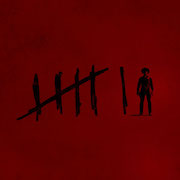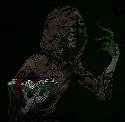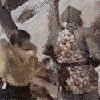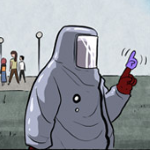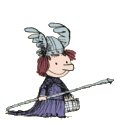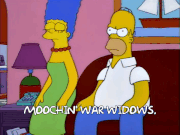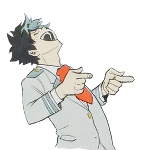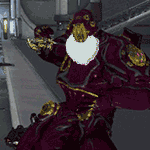|
MA-Horus posted:OK FINE gently caress they work but the B is still a garbage pile for a trillion loving dollars. Agreed. And we can put 95% of the blame for that on Congress. The other 5% goes to the Marines for thinking they need goddamned airplanes at all. CainFortea posted:If by "work" you mean "Usually don't kill their drivers and can sometimes hit what they're supposed to" then sure. I mean "work" as in "it does hella good poo poo in large force exercises when F-16s are getting their lunch stolen by the adversary aircraft and SAMs." These are not scenarios designed to be easily won.
|
|
|
|

|
| # ? May 31, 2024 09:13 |
|
Proud Christian Mom posted:The F-35 works in that it makes Lockheed money while giving jingoistic shitheads something to brag about while people literally die from not being able to afford insulin. it's a good punchline that the last new warplane the united states of america will field before its collapse is the loving f-35.
|
|
|
|
MA-Horus posted:That's barely even the point. With the Manhattan project, man's understanding of the laws of physics and chemistry were changed in a dramatic and terrifying way. Los Alamos, Oak Ridge and Hanford were all built. Gigantic Calutron plants and Gaseous Diffusion and liquid thermal diffusion plants had to be built, each one of those with it's own technological difficulties to overcome (gaseous diffusion especially). They had to build nuclear reactors based on a pile of graphite bricks and uranium ore that Fermi had built in a goddamn squash court, and have them scaled way the gently caress up. They had to figure out how to separate plutonium from uranium using robots so the workers wouldn't glow in the dark. Then they had to experiment on an element that had never been seen on Earth before, and then they had to figure out how to make it go bang which required an effort so big it nearly made Oppenheimer quit the project. They had to figure out how to turn explosives into a precision instrument, how to make the explosive lenses fire at the same time, how to keep the physics package together long enough for the chain reaction to develop, and how to make the whole thing deliverable in a neat tidy package. Yeah, the Manhattan project achievements was not about its cost, but how completely and decisively it changed our understand of almost the entirety of atomic physics.
|
|
|
|
Also had to figure out how to extract the entire planets worth of experimental plutonium from that scientist who accidentally ate it all that one time.
|
|
|
|
Carth Dookie posted:Also had to figure out how to extract the entire planets worth of experimental plutonium from that scientist who accidentally ate it all that one time. https://warisboring.com/the-scientists-who-pee-plutonium/ There was a club at Los Alamos called the UPPU club.
|
|
|
|
Let’s not forget about “tickling the dragon’s tail”, aka the story of the Demon Core (which killed 2 scientists). https://en.m.wikipedia.org/wiki/Demon_core
|
|
|
|
One lesser known element of Operation Downfall was a plan presented to Truman's desk to employ the US chemical weapons arsenal, in its entirety, to Japan. To quote the US Naval Institute:quote:During the summer of 1945, as millions of U.S. servicemen planned for two massive invasions of Japan and several thousand others were engaged in the Manhattan Project to develop the atomic bomb, a handful of Army officers had another plan to end the war.
|
|
|
|
If the atomic bombs hadn't been used and the invasion had gone ahead, we'd be having these same arguments except they would be "why did Truman not drop the bombs to end the war sooner?"
|
|
|
|
They'd have probably diverted their already meager supplies to troops at that point so the starvation among civilians would have been even worse than they were. Which was dire.
|
|
|
|
Milo and POTUS posted:They'd have probably diverted their already meager supplies to troops at that point so the starvation among civilians would have been even worse than they were. Which was dire. Considering the Japanese war plan for Olympic involved giving the populace bamboo spears and expecting 20 million casualties, you're probably not wrong. I am a little interested to see what would have happened if they had just surrendered after their peace overtures to Russia were rejected so...overtly. That must have been pretty shocking for the Japanese ambassador to the Soviets, thinking there was a hope for the Russians to lead a peace negotiation only to be told "Nah we're at war now and we just obliterated your forces in Manchuria".
|
|
|
|
if we hadn't dropped the nukes and scarred generations with their horror the world might have been more willing to use them in the cold war
|
|
|
|
McCarthur was all on board nukeing North Korea and/or China. He also didn't understand about fallout.
|
|
|
|
CainFortea posted:McCarthur was all on board nukeing North Korea and/or China. He also didn't understand about fallout. yeah but because the public was scared of nukes there was political pressure not to use them. The civilian population might not have found out about the existance of nukes for a decade if not more. Imagine a cold war with atomic weapons the public doesn't even know exist
|
|
|
|
To a certain extent, WWI happened because Europe suddenly had all these fancy toys and wanted to play a nice game of industrialized warfare with them. If WWII didn't happen exactly when it did, then whatever country first figured out how to open a can of sunshine would probably have done the same thing, but bigger.
|
|
|
|
I will never get sick of the term "canned sunshine". It's so very apt.
|
|
|
|
Memento posted:I will never get sick of the term "canned sunshine". It's so very apt. 
|
|
|
|
https://twitter.com/pareene/status/1070888936522899456 "We invaded some Afghanistan".
|
|
|
|
We're never leaving Afghanistan because it'd mean we might have to accept that we lost Vietnam 2.0 and created another generation of people mad that they didn't get an easy win because of liberals and the media, promptly sending more people to their death to make up for it.
|
|
|
|
Hremsfeld posted:To a certain extent, WWI happened because Europe suddenly had all these fancy toys and wanted to play a nice game of industrialized warfare with them. If WWII didn't happen exactly when it did, then whatever country first figured out how to open a can of sunshine would probably have done the same thing, but bigger. That's... ermm, well, just wrong. On every level that's wrong. WWII happened for a lot of reasons but your's is wrong. This is the best thread to post that opinion.
|
|
|
|
Burt posted:That's... ermm, well, just wrong. On every level that's wrong. WWII happened for a lot of reasons but your's is wrong. This is the best thread to post that opinion. I think he was talking about WWI.
|
|
|
|
McNally posted:I think he was talking about WWI. It's still wrong.
|
|
|
|
Godholio posted:It's still wrong. I know. Everybody knows WWI happened because a guy named Archie Duke shot an ostrich because he was hungry.
|
|
|
|
Direct cause, yeah, but everyone else was so drat eager to honor the web of alliances because they wanted to 1) kill a bunch of the people they knew they'd be up against and 2) test out their new toys.
|
|
|
|
Hremsfeld posted:Direct cause, yeah, but everyone else was so drat eager to honor the web of alliances because they wanted to 1) kill a bunch of the people they knew they'd be up against and 2) test out their new toys. You don't think the expansion of checkboard diplomacy naturally led to a broad, multi factional conflict as a consequence of it's myopic strategic analysis and dependence on counterbalancing regional competitors?
|
|
|
|
And why was it myopic? Oh, right. "We've got the best tank in the world, nothing can stand in our way".
|
|
|
|
There was also the universal assumption that any war would be over quickly. It was widely believed that in an age of global commerce, prolonged war would be untenable economically. The diplomats saw the inevitable war as just the lead-in to the next Congress of Vienna, where they would sort out the real balance of power in Europe.
|
|
|
|
Also, we'd all been regularly killing each other for centuries. Wars depopulating parts of Europe were a regular thing. Even after going "Egads we got far too good at that. Let's call it a day." we couldn't resist another go round.
|
|
|
|
CainFortea posted:And why was it myopic? I can guarantee nobody thought this in 1914.
|
|
|
|
Vindolanda posted:I can guarantee nobody thought this in 1914. And even if they had in 1939, the French had the heaviest and more powerful tank on the field at the time, for all the good that did.
|
|
|
|
Kawasaki Nun posted:You don't think the expansion of checkboard diplomacy naturally led to a broad, multi factional conflict as a consequence of it's myopic strategic analysis and dependence on counterbalancing regional competitors? Wasn't there some dude who was great at all that 13-dimensional chess poo poo and had the continent on lockdown, where no one was willing to fight because they'd end up fighting themselves through treaty agreements? And then he retired and the whole house of cards fell apart.
|
|
|
|
Memento posted:Wasn't there some dude who was great at all that 13-dimensional chess poo poo and had the continent on lockdown, where no one was willing to fight because they'd end up fighting themselves through treaty agreements? And then he retired and the whole house of cards fell apart. You might be thinking of Bismarck.
|
|
|
|
CainFortea posted:And why was it myopic? It's myopic because "The enemy of my enemy is my friend" is a truism only with respect to your common enemy and not all nation States. It has literally 0 to do with tanks
|
|
|
|
Carth Dookie posted:You might be thinking of Bismarck. Who Kaiser gimparm fired because he knew Bismark was smarter than him. Wilhelm and Trump have some shocking similarities.
|
|
|
|
also tanks weren't even loving invented until halfway through the war, the hell are you on about.
|
|
|
|
Malachite_Dragon posted:also tanks weren't even loving invented until halfway through the war, the hell are you on about. And, boy, what a mess that was.
|
|
|
|
They got all muddy 
|
|
|
|
Milo and POTUS posted:They got all muddy The absolute worst thing a tank can be.
|
|
|
|
Malachite_Dragon posted:also tanks weren't even loving invented until halfway through the war, the hell are you on about. It's almost like I pulled a random example of it out of my rear end. Tank, plane, new bolt action, new chemical weapon. What the gently caress ever. The point is people thought the war would be super easy to win and were wrong.
|
|
|
|
WWI cracks me up, like poo poo when you name it WORLD WAR I you're pretty much begging for there to be a World War II and who knows how many more after that like, c'mon guys
|
|
|
|

|
| # ? May 31, 2024 09:13 |
|
CainFortea posted:It's almost like I pulled a random example of it out of my rear end. Tank, plane, new bolt action, new chemical weapon. What the gently caress ever. You kind of picked one of the biggest points of historical debate about one of the biggest wars in history, and used it as the centerpiece of your argument. In a military subforum. With several people who have graduate degrees in history, and a whole lot more who actually read quality books on history out of personal interest.
|
|
|




